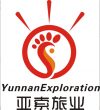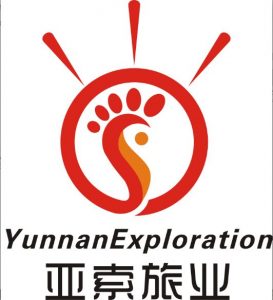Personal Background
Birthplace and Ethnicity: Born in 1954 in Tanjia Ying Ba She (谭家营八社), Hexi Town (河西镇), Tonghai County (通海县), Yuxi City (玉溪市), Yunnan Province (云南省); of Han ethnicity.
Artistic Inspiration: From a young age, Li showed a passion for art, displaying keen observation skills and a talent for imitating drawings. He also experimented with sculpting small human and animal figures using clay.
Professional Journey:
- At the age of 25, he began working as a carpenter, excelling in architectural decorative carving such as floral beams and dragon-head columns.
- At 30, he transitioned into stone sculpture design and production, creating over a hundred stone sculpture pieces.
Representative Works and Achievements
Famous Works:
- The Twelve Zodiac Animals (《十二生肖》) sculpture at the plaza of Yunnan Ethnic Village (云南民族村) in Haigeng (海埂), Kunming (昆明).
- Endless Affection (《情意绵绵》), a pair of stone lions selected for the 3rd China Art Festival and exhibited at the Yunnan Provincial Museum (云南省博物馆).
Honors and Certifications:
- In 1994, he received the “Yunnan Provincial Urban Sculpture Production and Design Qualification Certificate” from the Yunnan Provincial Department of Construction.
- In September 1995, he was awarded the title of “Folk Arts and Crafts Artist” by UNESCO and the China Folk Literature and Art Association.
- Member of the Yunnan Folk Literature and Art Association.
Social Influence and Cultural Heritage
As one of the first provincial-level inheritors of intangible cultural heritage in Yunnan Province (云南省), Li Zhengquan’s stone carving techniques have played a significant role in the development of traditional stone sculpture art in Tonghai County (通海县) and beyond.
His artworks not only possess artistic value but are also widely used in public spaces, contributing to the dissemination of Yunnan’s ethnic culture.
Li Zhengquan’s artistic journey reflects the rich tradition of folk craftsmanship in Hexi Town (河西镇), Tonghai County (通海县). His works remain highly regarded and collected. For more detailed information, please refer to the official Yunnan Intangible Cultural Heritage Protection website.
Stone Sculpture Art of Hexi Town, Tonghai County
Long History
The stone sculpture art in Hexi Town (河西镇), Tonghai County (通海县), boasts a long and rich history. According to historical records, the stone carving tradition in Xiejia Ying Village (解家营村) can be traced back to the Yuan Dynasty (元朝).
Since then, locals began quarrying and sculpting stone, passing down the craft through generations. The surrounding rocky hills provide an abundant source of high-quality stone that is fine in texture, well-layered, and ideal in hardness—perfect for carving.
Exquisite Craftsmanship
Hexi Town (河西镇) is known for its skilled stone carving techniques, encompassing various styles including bas-relief, round sculpture, sunken carving, openwork, and shadow carving.
Bas-reliefs range from high to shallow relief, while round sculptures often feature intricate chisel work and hollowed-out designs. These methods preserve traditional essence while incorporating modern design concepts to meet contemporary aesthetic standards.
Rich Themes
The themes of stone sculptures in Hexi Town (河西镇) are diverse, often depicting auspicious symbols such as qilin (麒麟), lions (狮子), and dragons and phoenixes (龙凤). These motifs are not only visually appealing but carry deep cultural meanings—qilin represents good fortune, and lions signify majesty and protection.
Many sculptures also include elements of Yi ethnic culture, showcasing scenes from daily life and cultural characteristics of the Yi people (彝族).
Iconic Works
Qilin Wall (麒麟壁): Located at the west end of Xiejia Ying Village (解家营村), this large stone carving is a precious art piece of Tonghai County (通海县). Measuring 5.47 meters wide and 3.87 meters tall, it features carved motifs of qilin, treasure cauldrons emitting smoke, ribbons tied to jade scrolls, silver ingots, and glowing fireballs. The designs are intricate and beautifully crafted.
Southern Yunnan Stone Lions (滇南石狮): These are representative of Tonghai’s (通海) stone carving style. The lions are notable for their pronounced eyeballs, lotus-leaf-shaped faces and mouths, chubby yet spirited postures, and endearing expressions. For example, the stone lions in front of the Great Compassion Pavilion (大悲阁) of Yuanming Temple (圆明寺) are masterfully carved and full of grandeur, exemplifying the excellence of Tonghai stone art.
Inheritance and Innovation
In recent years, stone sculptors in Hexi Town (河西镇) have embraced innovation, combining traditional techniques with modern CNC (computer numerical control) carving technology to develop a more industrial and large-scale approach.
For instance, master craftsman Jie Zhida (解智达), a provincial-level artist, has created a series of outstanding works through this integration, earning multiple awards in the “Gongmei Cup (工美杯)” craft competitions.
Cultural and Economic Value
The stone sculpture art of Hexi Town (河西镇), Tonghai County (通海县), holds significant cultural and economic importance. Xiejia Ying Village (解家营村) alone is home to 26 stone material and sculpture processing enterprises, 125 workshops, and 468 practitioners, generating nearly 100 million yuan in annual output.
These artworks are well-known throughout the province and are also sold to markets outside of Yunnan, greatly enhancing the reputation and influence of Tonghai’s stone carving tradition.
With its refined craftsmanship, diverse themes, and deep cultural roots, the stone sculpture art of Hexi Town (河西镇), Tonghai County (通海县), is a vital part of Yunnan’s intangible cultural heritage. Through continuous innovation and development, local artisans are breathing new life into this ancient art form in today’s modern world.
http://www.ynich.cn/view-ml-13111-2553.html

 7 Days GolfingTour
7 Days GolfingTour
 8 Days Group Tour
8 Days Group Tour
 8 Days Yunnan Tour
8 Days Yunnan Tour
 7 Days Shangri La Hiking
7 Days Shangri La Hiking
 11 Days Yunnan Tour
11 Days Yunnan Tour
 6 Days Yuanyang Terraces
6 Days Yuanyang Terraces
 11 Days Yunnan Tour
11 Days Yunnan Tour
 8 Days South Yunnan
8 Days South Yunnan
 7 Days Tea Tour
7 Days Tea Tour
 8 Days Muslim Tour
8 Days Muslim Tour
 12 Days Self-Driving
12 Days Self-Driving
 4 Days Haba Climbing
4 Days Haba Climbing
 Tiger Leaping Gorge
Tiger Leaping Gorge
 Stone Forest
Stone Forest
 Yunnan-Tibet
Yunnan-Tibet
 Hani Rice Terraces
Hani Rice Terraces
 Kunming
Kunming
 Lijiang
Lijiang
 Shangri-la
Shangri-la
 Dali
Dali
 XishuangBanna
XishuangBanna
 Honghe
Honghe
 Kunming
Kunming
 Lijiang
Lijiang
 Shangri-la
Shangri-la
 Yuanyang Rice Terraces
Yuanyang Rice Terraces
 Nujiang
Nujiang
 XishuangBanna
XishuangBanna
 Spring City Golf
Spring City Golf
 Snow Mountain Golf
Snow Mountain Golf
 Stone Mountain Golf
Stone Mountain Golf














